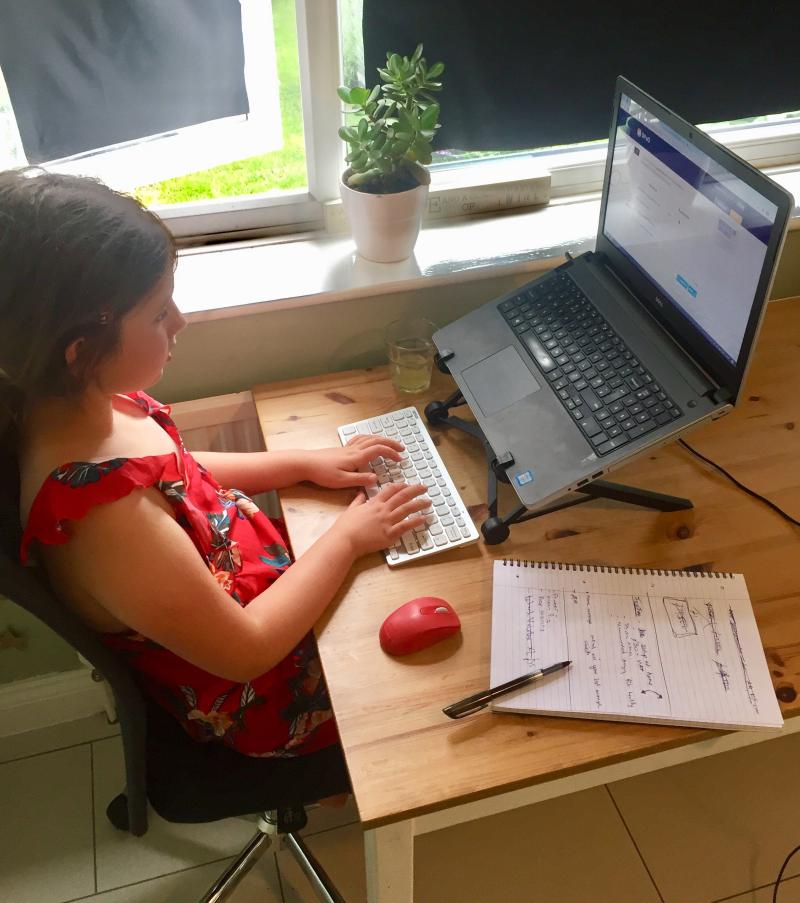Bridget Leathley
Bridget Leathley, thesaferchoice.co.uk is a freelance health and safety consultant, she is a Chartered member of IOSH as well as a Chartered Psychologist and Associate Fellow of the British Psychological Society.
Bridget provides risk management support in facilities, retail and office environments. She delivers face-to-face safety training including IOSH and bespoke courses, and contributes to e-learning courses through evaluations and design work. She has been writing for health and safety publications since 1996.

While some children are back at school, many are still at home for some or all their schooling. University students have been studying from home since before Easter, with no firm promises that lectures will restart in the Autumn.
The routine of getting up, walking or cycling to school, or walking to the bus stop, is an important part of pre-learning preparation. Even for children who are chauffeured to the school gates, the school day is full of movement, particularly for older children who change classroom for every lesson. Physical education lessons are part of the curriculum, and break times are taken outdoors.
Lockdown has changed all this. Some schools set work to be downloaded and done at any time. Some teenagers have become nocturnal, getting the work done, but sleeping all morning, working all afternoon, and playing the night away on computer games. Even where the school requires an online registration at 9am, you don’t need to get dressed for the walk to the laptop. And instead of climbing stairs and running along corridors between lessons, they can close an online learning session, open a browser and download a document to move to the next subject. As a result, children might be in static postures for hours on end.

Sedentary lifestyles amongst some teenagers were already a problem before lockdown. Pain in the upper body (back, neck, shoulders) is rare in children before they start school. However, the longer children are at school, the more they are likely to suffer from upper body pains. There is a step increase in likelihood at around the age of 11-12, the time when many children move from junior to senior school, accompanied by longer journeys to school. By the time they leave education as 18-year olds they have almost the same prevalence of pain as the rest of the adult population.
Heavy school bags, and the loss of the traditional classroom desk to store books is one reason. But another key factor is ergonomics. While employers must provide employees with adjustable chairs and equipment, at school tiny 11-year olds and towering 18-year olds have to mould their bodies into the same fixed height chairs to use at the same desks. Studies of children show that in particular, the position of the head and the angle of the lower back and pelvis have an impact on upper body pain.

If you’re working from home, hopefully your employer will have given you support on home office ergonomics. You might have been offered a separate keyboard and mouse to help you to create an ergonomic workstation. You might have been asked to carry out a home workstation DSE assessment. But while the schools set work for your children, what support have they given to making sure that their workstation for studying is as good as it can be?
I’ve seen photos during lockdown of whole families clustered around a dining room table, with children’s legs dangling unsupported, and their elbows well below the height of their keyboards. Our homes weren’t designed for schooling.
Many youngsters are very adept at using the built-in mouse and keyboard on a laptop, but if you have children using a computer at home, persuade them to sit at a table or stand by a worktop with a separate keyboard and mouse. The laptop can then be placed on a stand, such as the Nexstand, so that you can adjust its height. As for adults, the top of the screen should be at, or just below eye level. You might need cushions to adapt the chair, and a box or other support under their feet if they don’t reach the ground. Once the feet are supported, it is easier to adopt a better back and neck posture.

Your children might not want to spend all their time sitting at a table. Varying their posture by working in other ways (even on bean bags!) for short periods is ok, provided they remember to keep moving. The less ideal the posture, the more often you need to move. Some teachers have set activity challenges, where the children have to prove they walked or ran 5 km using an activity tracker or send in a video of themselves skipping or jumping. Science teachers have sent children outdoors to find flowers to dissect and draw, or to identify and count birds. Maths teachers have told children to go outside to measure lengths, volumes and capacities. Some online students are reminded every 30 – 40 minutes to stand up, stretch and move around before they carry on. If you have children with less imaginative teachers, perhaps you can build some activity into their day. Some parents have even given in to the “can we have a dog?” plea, just to get children out of the house!
If you can teach some good habits at home, they might continue with these when they go back to school or college. To avoid making their school bags any heavier, they’ll need lightweight and portable ways of adapting their set-up. A Nexstand laptop stand weighs only 234g, and folds to be around the same length as a ring binder. Compact keyboards and mice with retractable cords are also available to complete the package.
MacDonald J, Stuart E, Rodenberg R. Musculoskeletal Low Back Pain in School-aged Children: A Review. JAMA Pediatr. 2017;171(3):280‐287. doi:10.1001/jamapediatrics.2016.3334
Wirth, B., Potthoff, T., Rosser, S. et al. Physical risk factors for adolescent neck and mid back pain: a systematic review. Chiropr Man Therap 26, 36 (2018). https://doi.org/10.1186/s12998-018-0206-y

